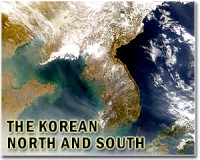 |
Seoul (UPI) Mar 17, 2011 South Korea said it aims to purchase a number of drones and stealth fighters starting around 2015 as part of the delayed acquisition F-X program. "We will acquire high-altitude unmanned reconnaissance planes to boost our surveillance capability against the enemy," Defense Minister Kim Kwan-jin said. "Last year we endured North Korea's grave provocations. ... Now is the time to act boldly and wisely to make our military strong enough in the face of pending security threats." But a contract for buying Northrop Grumman RQ-4 Global Hawks, an unmanned surveillance vehicle, could be signed much sooner, a South Korean military source told Yonhap news agency. "If the U.S. (Defense Department) responds favorably to our letter by June, we expect to sign a preliminary contract on the purchase of the Global Hawks by the end of this year," the unnamed source said. The RQ-4 drone, used by the U.S. Air Force and Navy, had its initial test flights in March 2006. It uses an Allison Rolls-Royce AE3007H turbofan engine and Raytheon provides viewing sensors. The aircraft can survey up to 40,000 square miles a day. South Korea's F-X program started in 1999 and is one of four major weapons modernization projects. The other three are AH-X for the purchase of attack helicopters, E-X for surveillance aircraft and systems and the SAM-X project for buying surface-to-air missiles. The first two stages of South Korea's F-X program have included the purchase of 60 of Boeing's F-15 fighter jets since 2002. Planes being considered for purchase under the third stage of the F-X program for 60 advanced stealth fighters include Lockheed Martin's F-35 Lightening II Joint Strike Fighter, Boeing's F-15 Silent Eagle and the Eurofighter Typhoon made by the European consortium EADS. Earlier in the F-X program, Dassault's Rafale and the Russian Su-35 were under consideration. The need for faster procurement of military hardware was brought sharply into focus in the past year through aggression from North Korea. The two Koreas remain technically at war after the 1953 armistice that split the Korean Peninsula. In November, military tensions heightened when North Korea unexpectedly shelled the South Korea's Yeonpyeong Island in the Yellow Sea several miles from the North's mainland. Dozens of houses and several military buildings were damaged in the attack that killed two South Korean marines and two civilians and injured at least 20 people. South Korean forces returned fire but there were no known causalities. Also last year, military tensions rose dramatically with the sinking of the 1,200-ton South Korean patrol boat Cheonan and the loss of 46 sailors. North Korea repeatedly denied it had sunk the vessel in March, despite an international investigating team that said it found strong evidence that the Cheonan was hit by a torpedo of North Korean manufacture. Of particular defense concern to South Korea, as well as Japan, was China's announcement in January that its indigenous J-20 stealth fighter had its maiden test flight in Chengdu, Sichuan Province. Several videos of the test flight appeared on Internet sites. At the time, a Chinese test pilot refuted allegations that the J-20 used copied parts from a Lockheed F-117 Nighthawk. Analysts said the J-20 is more like the U.S. Air Force's Lockheed Martin's F-22 Raptor stealth jet and Russia's Sukhoi T-50, which had its first test flight in January 2010 and is expected in service sometime after 2015. Japan recently gave the green light for its fighter upgrade program. The three aircraft expected to be front runners are the Boeing F/A-18 Super Hornet, Eurofighter Typhoon and the Lockheed Martin F-35. Earlier this month the South Korean Defense Ministry said it won't go ahead with its planned Joint Forces Command changes in its command structure, a ministry official said. The plan was announced in December amid growing calls to improve interoperability between the three wings of the armed forces to better respond to provocations by North Korea. It also was designed to prepare for the planned withdrawal South Korean troops from under United State's control to South Korean control in 2015. They currently work together within the U.S.-led Combined Forces Command. After 2015, South Korea and the United States will operate separate war-fighting theater commands on the Korean Peninsula. But the navy and air force opposed the JFC plan, fearing that the army would dominate the new command structure, South Korea's Yonhap news agency said.
Share This Article With Planet Earth
Related Links Learn about nuclear weapons doctrine and defense at SpaceWar.com Learn about missile defense at SpaceWar.com All about missiles at SpaceWar.com Learn about the Superpowers of the 21st Century at SpaceWar.com
 US asks 'concrete' steps before new N. Korea talks
US asks 'concrete' steps before new N. Korea talksWashington (AFP) March 17, 2011 The United States said Thursday it would require "concrete action" by North Korea before resuming six-party talks aimed at ending the Stalinist state's diplomatic isolation. The US comments from State Department spokesman Mark Toner came two days after North Korean officials told a visiting Russian envoy that it was willing to return to the six-party nuclear talks "without any precondition." ... read more |
|
| The content herein, unless otherwise known to be public domain, are Copyright 1995-2010 - SpaceDaily. AFP and UPI Wire Stories are copyright Agence France-Presse and United Press International. ESA Portal Reports are copyright European Space Agency. All NASA sourced material is public domain. Additional copyrights may apply in whole or part to other bona fide parties. Advertising does not imply endorsement,agreement or approval of any opinions, statements or information provided by SpaceDaily on any Web page published or hosted by SpaceDaily. Privacy Statement |